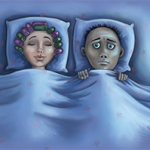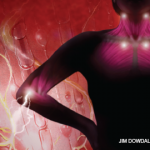
Sleep disturbance is an important medical problem, requiring intervention, not simply to reduce latency to its onset, but to ensure achievement of the depth of sleep that has been documented to restore homeostasis and prevent the falls that are responsible for so much morbidity and mortality.1
Sleep disturbance is present in 50% of people over age 54.2,3 It is associated with poor health, altered mood, depression, anxiety, fatigue, fibromyalgia, deficits in daytime functioning, impaired short-term memory, inability to concentrate, impaired attention and motor skills, reduced quality of life, impaired social and family functioning, and falls.3-17 Lack of deep sleep makes individuals clumsy, impairs function, reduces quality of life and increases not just the risk, but the actual frequency of falls.1,18-20
Sleep disorders turn healthy glucose tolerance to prediabetic states and increase inflammation, sympathetic nervous system activity and development of hypertension, hyperlipidemia and other cardiovascular risks.18,21-27 Disturbed sleep reduces time for restoration and increases the demand on stability-related physiological resources.5,28 Sleep is important to clear interstitial waste products from the adult brain and for maintenance of orthostatic cardiovascular control, including blood pressure and heart rate.29-31 Sleep disturbance compromise of the latter represents a major source of falls.
Two parameters are important in assessing appropriate interventions for sleep disorders: hypnotic and sleep stage.32 The former, characterized by sleep latency, duration and awakenings, does not seem pertinent to resolution of fibromyalgia and chronic fatigue.33 It is the second parameter, limited time in Stage IV and REM sleep, that appears to be a driving factor, especially for fatigue and fibromyalgia.33-36 REM and Stage IV sleep are important for consolidation of memory and processing of affective cognition.37
So how do we ensure restoration of REM and Stage IV sleep, which are critical for the resolution of fatigue and fibromyalgia?33-36 Hypnotic agents (e.g., triazolam [Halcion], zolpidem [Ambien], temazepam [Restoril] and eszopiclone [Lunesta]) have documented efficacy in both restoration of Stage IV sleep and in the treatment of fibromyalgia.33,36,38 Davies et al reported resolution of “chronic widespread pain” with effective reintroduction of restorative sleep, and 50% of individuals treated with a hypnotic had not just slight improvement, but resolution of fibromyalgia.36,39
Have falls been associated with use of such hypnotics? Yes, but there is no evidence that hypnotic-attributed falls are actually more frequent than those that normally occur in sleep-deprived individuals. Hypnotics certainly represent less risk of adverse events than the disorder(s) for which they are used to treat. Restoration of normal sleep patterns suggests that the overall frequency of falls would be reduced. This is especially true for untreated individuals with fibromyalgia, 63% of whom have poor balance.40


